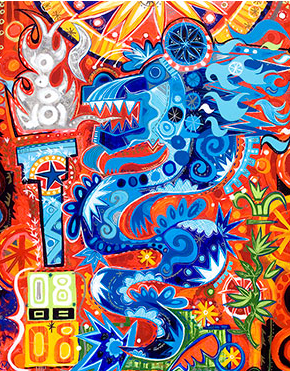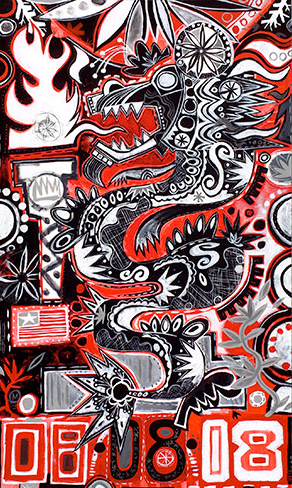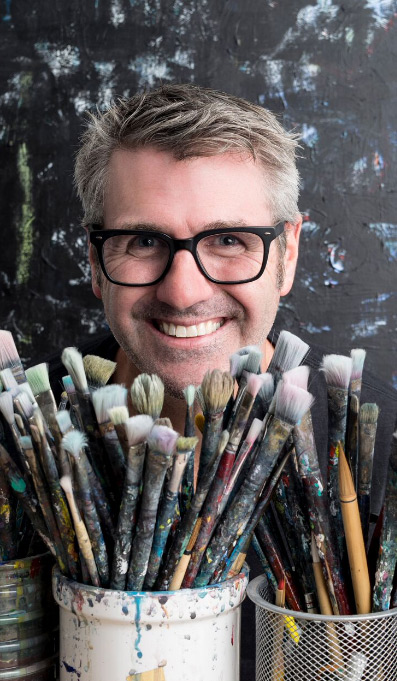This is an excerpt of an article that originally appeared on AIGA website, authored by Steven Heller on the 2008 Olympic poster design created for the United States Olympic team for the Beijing Summer Olympics of 2008.
Excerpt from the AIGA article authored by Steven Heller:
Heller: What does it mean to be an “official” artist? In the old Soviet Union it meant being sanctioned by the state to produce what the state wanted. In China during the Cultural Revolution it meant adhering to the aesthetic dictates of the government. But as an official 2008 Olympic artist selected by the U.S. Olympic Committee, Mark T. Smith—who has previously created original artwork for Rolling Stone, Absolut Vodka and Chrysler, among others—is responsible for producing a gallery of art to be used as posters and promotional materials for the Summer Games in Beijing. In this case, Smith’s official status allows him the freedom to express himself and interpret this major international event in his own style, with his own imagery. Here, Smith discusses the line he has to toe and the one he refuses to cross.
Heller: Judging from the abstract, symbolic look of your imagery, you seem to have had creative freedom, but how much?
Smith: I had complete freedom to design the image. Because of the consistency and quality of my images, I am always called on to “do what I do”—most commercial projects that I participate in have a larger amount of input in terms of imagery from the client. The image for the Olympics was presented as a sketch; after the approval of the sketch, the final artwork was created, along with a series of related works. The U.S. Olympic Committee approved the artwork without any changes.

Heller: Judging from the abstract, symbolic look of your imagery, you seem to have had creative freedom, but how much?
Smith: I had complete freedom to design the image. Because of the consistency and quality of my images, I am always called on to “do what I do”—most commercial projects that I participate in have a larger amount of input in terms of imagery from the client. The image for the Olympics was presented as a sketch; after the approval of the sketch, the final artwork was created, along with a series of related works. The U.S. Olympic Committee approved the artwork without any changes.
Heller: What do you hope to achieve?
Smith: I have used this commission as a platform to discuss larger societal issues surrounding the Chinese government policies toward Tibet, Darfur, the environment and the impending global integration of China into the world and its markets. However, my artwork has seldom been created with an activist or political agenda—this Olympic piece has neither. This commission comes at a time when China is being examined under the spotlight of international media attention surrounding the games. The intense interest in China’s internal and external policies has fostered an environment where these topics are being discussed frequently. I hope to contribute to the public discussion on these issues.

Heller: Do you believe in some way your work will contribute to the dialogue?
Smith: I believe that the primary purpose of art is to ennoble the public. This ethos is always a large part of my commission selection process. I look for projects that will touch as many people as possible. In addition, I believe that artists have a responsibility to communicate to the public on a wide variety of topics. Being an artist means in a larger sense being a problem-solver. Most artists have an unusual way of looking at problems and challenges. This can be a useful and interesting contribution to a dialogue such as this one. I hope that the artwork can be a small example of how two cultures can be interconnected in a productive and positive way, and that this will lead the viewer to think of other manners to make these cross-cultural connections.





